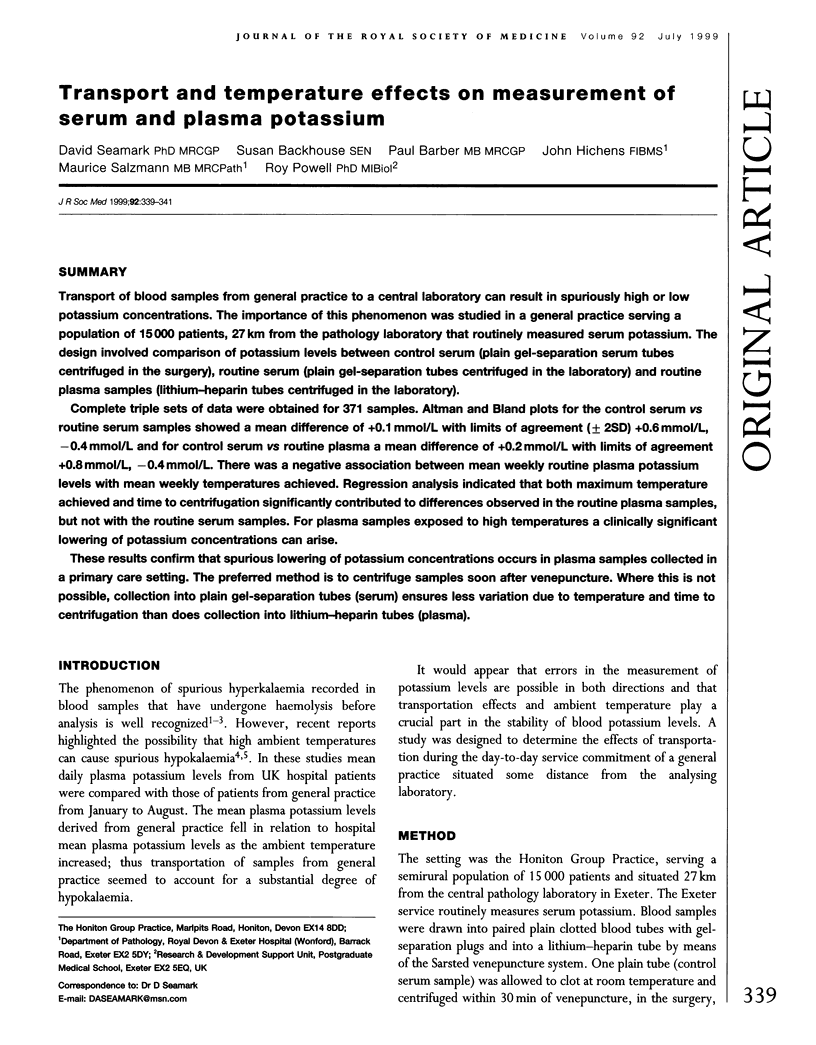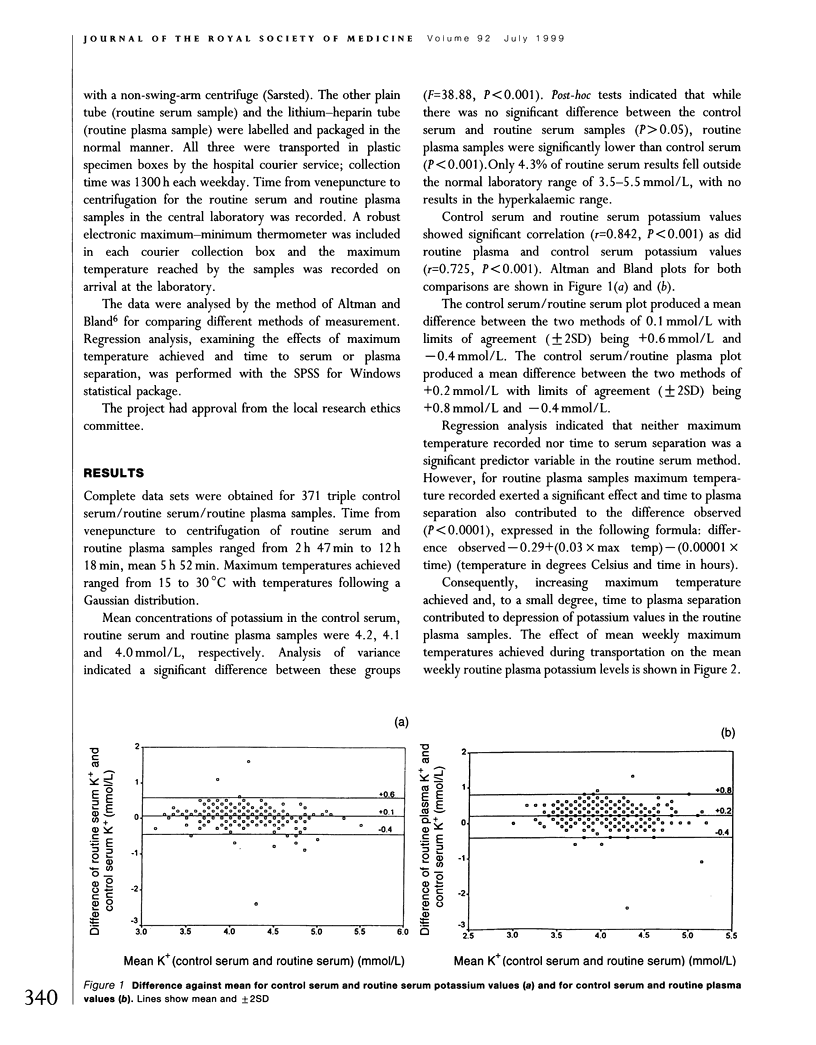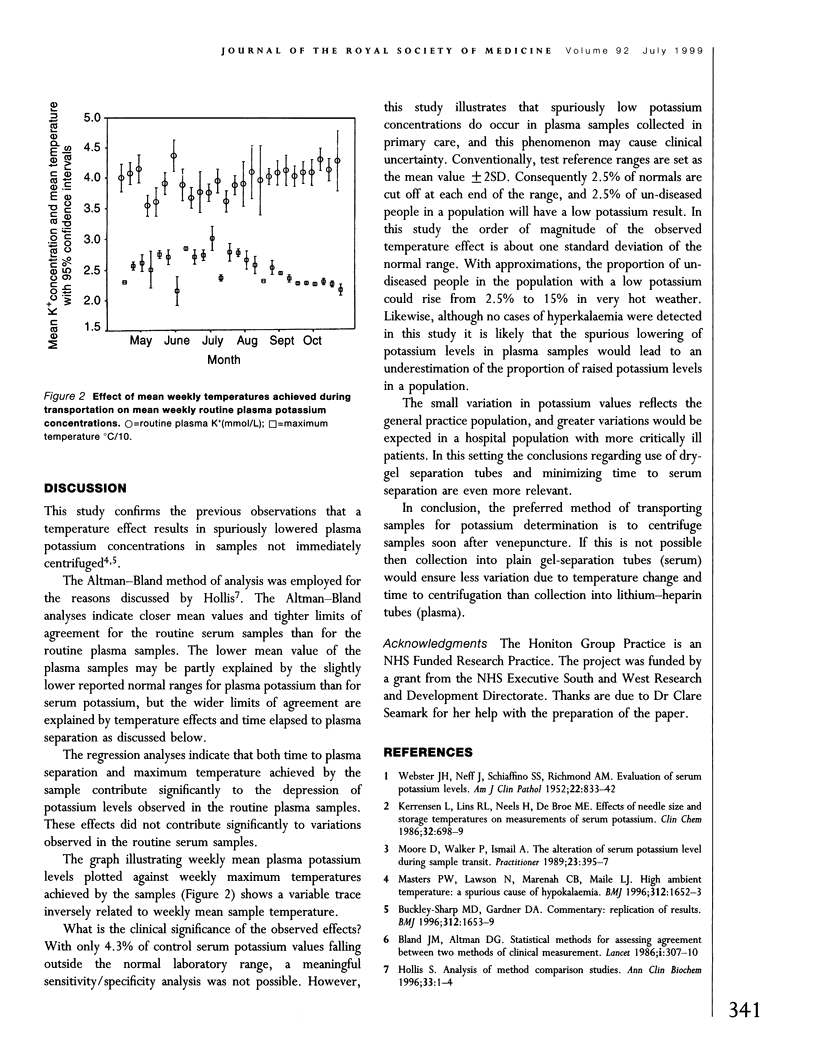Abstract
Transport of blood samples from general practice to a central laboratory can result in spuriously high or low potassium concentrations. The importance of this phenomenon was studied in a general practice serving a population of 15,000 patients, 27 km from the pathology laboratory that routinely measured serum potassium. The design involved comparison of potassium levels between control serum (plain gel-separation serum tubes centrifuged in the surgery), routine serum (plain gel-separation tubes centrifuged in the laboratory) and routine plasma samples (lithium-heparin tubes centrifuged in the laboratory). Complete triple sets of data were obtained for 371 samples. Altman and Bland plots for the control serum vs routine serum samples showed a mean difference of +0.1 mmol/L with limits of agreement (+/- 2SD) +0.6 mmol/L, -0.4 mmol/L and for control serum vs routine plasma a mean difference of +0.2 mmol/L with limits of agreement +0.8 mmol/L, -0.4 mmol/L. There was a negative association between mean weekly routine plasma potassium levels with mean weekly temperatures achieved. Regression analysis indicated that both maximum temperature achieved and time to centrifugation significantly contributed to differences observed in the routine plasma samples, but not with the routine serum samples. For plasma samples exposed to high temperatures a clinically significant lowering of potassium concentrations can arise. These results confirm that spurious lowering of potassium concentrations occurs in plasma samples collected in a primary care setting. The preferred method is to centrifuge samples soon after venepuncture. Where this is not possible, collection into plain gel-separation tubes (serum) ensures less variation due to temperature and time to centrifugation than does collection into lithium-heparin tubes (plasma).
Full text
PDF


Selected References
These references are in PubMed. This may not be the complete list of references from this article.
- Bland J. M., Altman D. G. Statistical methods for assessing agreement between two methods of clinical measurement. Lancet. 1986 Feb 8;1(8476):307–310. [PubMed] [Google Scholar]
- Buckley-Sharp M. D., Gardner D. A. Commentary: replication of results. BMJ. 1996 Jun 29;312(7047):1653–1653. doi: 10.1136/bmj.312.7047.1653. [DOI] [PMC free article] [PubMed] [Google Scholar]
- Hollis S. Analysis of method comparison studies. Ann Clin Biochem. 1996 Jan;33(Pt 1):1–4. doi: 10.1177/000456329603300101. [DOI] [PubMed] [Google Scholar]
- Masters P. W., Lawson N., Marenah C. B., Maile L. J. High ambient temperature: a spurious cause of hypokalaemia. BMJ. 1996 Jun 29;312(7047):1652–1653. doi: 10.1136/bmj.312.7047.1652. [DOI] [PMC free article] [PubMed] [Google Scholar]
- Moore D., Walker P., Ismail A. The alteration of serum potassium level during sample transit. Practitioner. 1989 Mar 22;233(1465):395–397. [PubMed] [Google Scholar]
- Verresen L., Lins R. L., Neels H., De Broe M. E. Effects of needle size and storage temperature on measurements of serum potassium. Clin Chem. 1986 Apr;32(4):698–699. [PubMed] [Google Scholar]
- WEBSTER J. H., NEFF J., SCHIAFFINO S. S., RICHMOND A. M. Evaluation of serum potassium levels. Am J Clin Pathol. 1952 Sep;22(9):833–842. doi: 10.1093/ajcp/22.9.833. [DOI] [PubMed] [Google Scholar]


